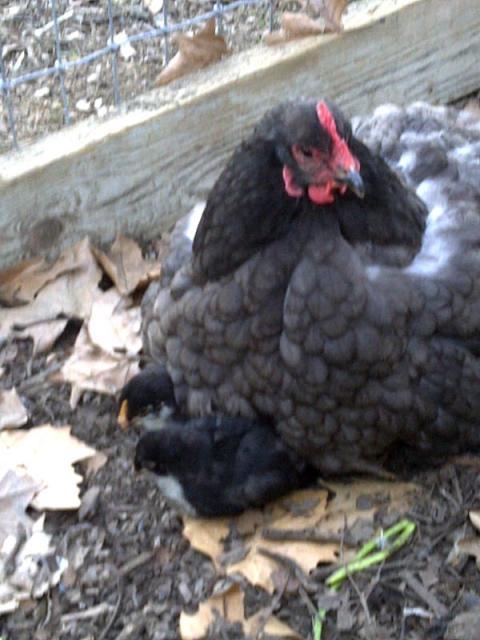I have seen tons of posts about using an incubator to hatch out eggs, but not very many informative posts on letting nature work its magic and letting the hen be the mother. When a hen goes broody and starts setting on eggs, do you need to move her and the eggs to a seperate pen to hatch and raise the babies? Will it be ok to handle the eggs while you are moving them and the hen, and will the hen continue to sit on the eggs after she and they have been moved to a new pen? What, exactly, are the dangers of handling eggs? Is it ok if you keep many broody hens (of various breeds) together to raise chicks even if the chicks are at varying stages of development? At what age do young chicks start to pick on other chicks? Will older chicks get along with younger chicks?
I was thinking of having multiple coops for each breed/color of chicken and another huge coop that will just be for broody hens and growing chicks.
I read another post that said the hen will know when she is done with the chicks and ready to be moved back into the main coop. Does anyone know approximately how long that should take? How long is too long and how long is too early? What is a good rule of thumb? How long does it take for a hen to start layng again after she has raised a brood of chicks? How many broods can one hen raise in a year (obviously this depends on the breed)? Should the broody/chick pen have a run included with it, if not for the hens, for the older chicks? Is it ok for chicks to go out into a run with a hen on bare ground?
What breed of hen is the best all-around mother?
The breeds I like are speckled Sussex, silver laced, golden laced and partridge Wyandottes, mille fleur d'uccle bantams, white Orpingtons, Marans, Russian Orloff's, Sicilian Buttercups, Dominiques, Campines, and Sumatras.
I also want to breed chickens to the standard, so I will be doing alot of culling. From the broody pen, I plan on having a growing out pen where I will decide which pullets and/or cockerels make the cut into the main flock and which ones will be eaten. The ones that will be eaten will be further segregated into another pen to finish filling out before going into the freezer.
I really love Sicilian Buttercup and Campines but I understand that these breeds seldomly go broody. Could I sneak their eggs under a broody hen for her to raise? Or likewise, what about quail eggs? Will quail chicks be fine around chickens? I am not opposed to having an incubator, just that I think it would be easier to let a hen do the work.
Does anyone have advice, experience, links to online sources, articles or anything to help me with this?
Thanks in advance!

I was thinking of having multiple coops for each breed/color of chicken and another huge coop that will just be for broody hens and growing chicks.
I read another post that said the hen will know when she is done with the chicks and ready to be moved back into the main coop. Does anyone know approximately how long that should take? How long is too long and how long is too early? What is a good rule of thumb? How long does it take for a hen to start layng again after she has raised a brood of chicks? How many broods can one hen raise in a year (obviously this depends on the breed)? Should the broody/chick pen have a run included with it, if not for the hens, for the older chicks? Is it ok for chicks to go out into a run with a hen on bare ground?
What breed of hen is the best all-around mother?
The breeds I like are speckled Sussex, silver laced, golden laced and partridge Wyandottes, mille fleur d'uccle bantams, white Orpingtons, Marans, Russian Orloff's, Sicilian Buttercups, Dominiques, Campines, and Sumatras.
I also want to breed chickens to the standard, so I will be doing alot of culling. From the broody pen, I plan on having a growing out pen where I will decide which pullets and/or cockerels make the cut into the main flock and which ones will be eaten. The ones that will be eaten will be further segregated into another pen to finish filling out before going into the freezer.
I really love Sicilian Buttercup and Campines but I understand that these breeds seldomly go broody. Could I sneak their eggs under a broody hen for her to raise? Or likewise, what about quail eggs? Will quail chicks be fine around chickens? I am not opposed to having an incubator, just that I think it would be easier to let a hen do the work.
Does anyone have advice, experience, links to online sources, articles or anything to help me with this?
Thanks in advance!






